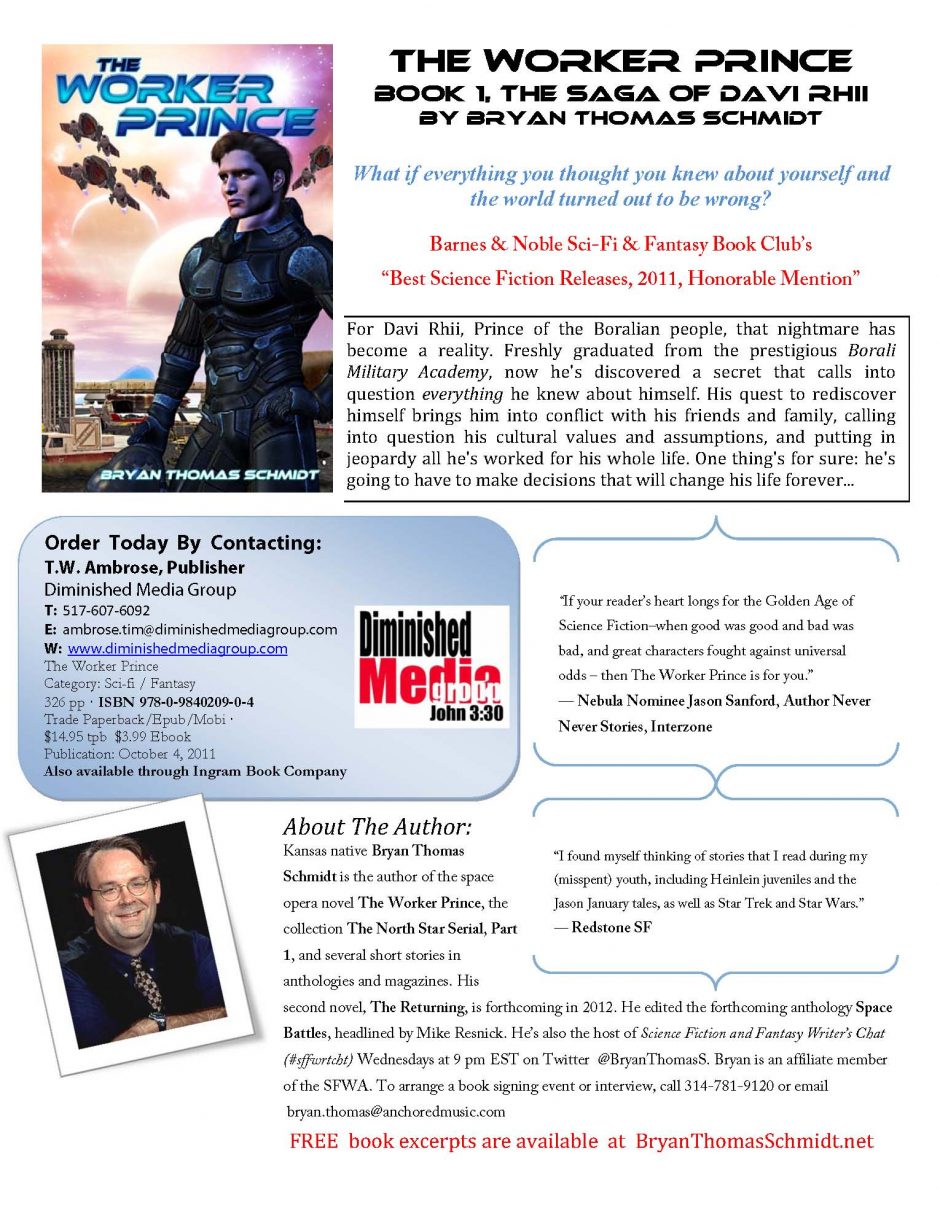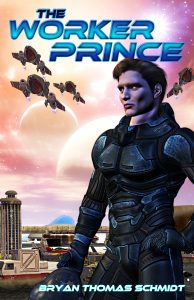



Although you can do one book sell sheet for whole series, typically a sell sheet exists for each book you release.
Professional book publicist Adonna Pruette explains: “When you are making efforts to promote your new novel, you want to walk into the bookstore with at least two things in hand – your books (buy some to take with you!) and your sell sheet. You want to be able to hand the manager, owner, or book buyer an attractive sheet that will act as an actual sales piece after you leave. It’s wise to spend some time reading up on the basic rules of effective sales copy to make sure that your sell sheet makes the grade. You want to present your book (and yourself) well on paper so that your book can get it’s foot in the door at that bookstore.
“Please remember while you are designing your sell sheet to try and make it as quickly scannable as possible. You aren’t trying to bog them down with a full page of paragraphs. Use color, lists, and boxes where possible and effective to make it a quick read with all of the info that the store needs. The person that you hand this sheet too will read it just as you would – they are going to quickly scan it from top to bottom with their eye stopping briefly on focal points on the way down.”
Let’s cover the basic information suggested or expected, look at some examples, and then talk about how to make your own, okay?
This is the sell sheet for my novel The Worker Prince. It’s probably easier to just click on it and open a separate screen so you can view it as I go through the elements. I have marked them on the sheet for visual reference. But here’s a breakdown:
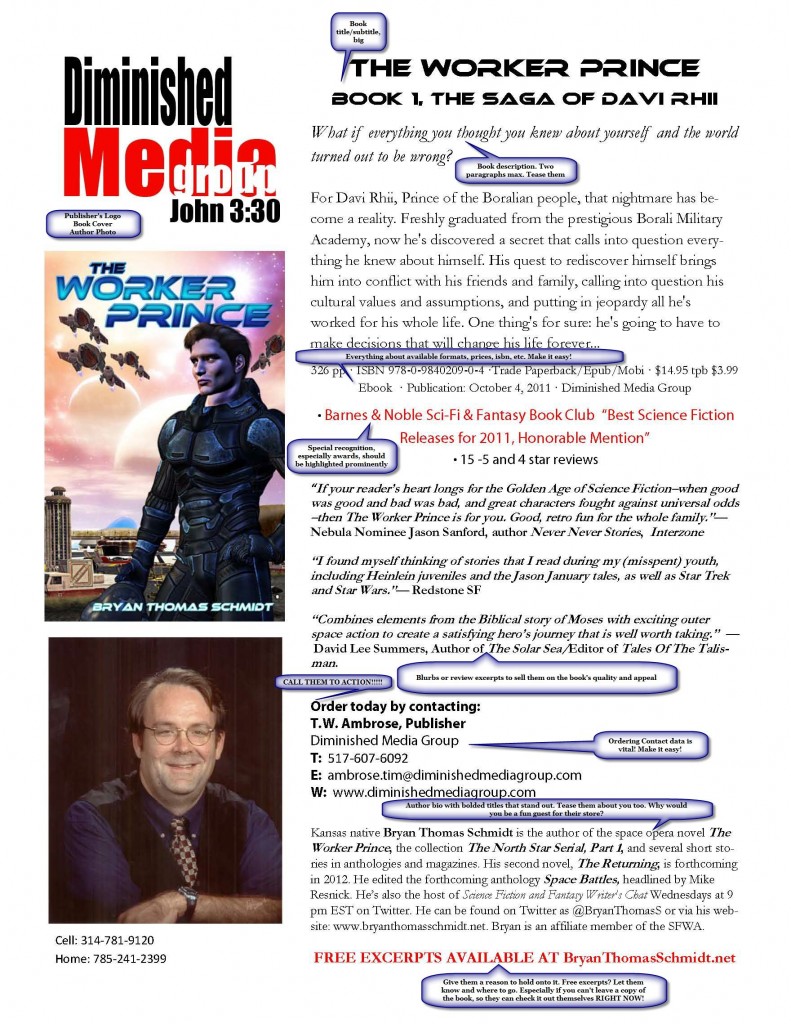


2. Sub-title (if you have one). Not as large as the title though.
3. Next, a brief book teaser description. Two paragraphs max. Don’t tell the whole story. Keep it open ended so they want to find out what happens. Leave them with questions they just have to get answered! Get a friend or fiction loving neighbor to read over your description and see if they want to know more about your book after reading it. Do they start to ask you questions about it? That’s a good tip off for you that it is “just right”.
4. Basic data: book categories, include the number of pages, ISBN (this is super important), all formats available, pricing per format, and publication info. (Stores will use this to look it up right away.)
5. Special honors, especially national ones come next, followed by blurbs or excerpts from reviews which demonstrate your book’s quality or appeal. Use the more well known reviewers or larger book blog review snippets toward the top of your reviews section. You will bold the reviewer’s name or site name to make it stand out more than the review itself usually. This practice will make your sell sheet a much more scannable read.
6. Which book distributors can your book be ordered from, if any? Two of the largest are Ingram Book Company (http://www.ingrambook.com ) and Baker & Taylor ( http://www.btol.com ). Adonna says that the store will want to know if your book can be ordered along with the normal book order that they place to their suppliers. If not, make sure that complete ordering info is on your sell sheet: Publisher’s name, web address, phone number, and email.
In cases of nonfiction, you may wish to bullet point your platform and what you offer as a speaker and expert here. Why should you be chosen? What do you offer which no one else can? What distinguishes you?
7. CALL THEM TO ACTION: Ask them to order copies and give them the info to do it NOW!
8. Sell yourself, not just the book, with a brief bio and contact info, including 1 or 2 (max) social media accounts. Make it easy to go directly to you. You’re the one with whom they want a personal relationship. Not just an order desk.
9. If you can’t give them an ARC (they cost money, of course), then tell them how to get a peek inside right now. Tell them where they can read an excerpt in big, bold, colored letters that say FREE. This also gives them a good reason to hold on to the sell sheet. If they’re intrigued by all of the rest, they’ll look into it.
10. Always include the publisher’s logo, if you have one, and the book cover shot and your photo. Be professional. If your book is traditionally published, even by a small press, this helps it to stand out as gatekeepers have approved it.
Here are links to sample sell sheets. One covers a series, the others individual books.
http://www.iuniverse.com/uploadedFiles/iUniverse/Expert_Advice/Selling_Your_Book/Make_a_Sell_Sheet/iU_LoveWhatYouDo_Sell%20Sheet%208%2028%202009.pdf — Here’s one for a Nonfiction book from iUniverse.
http://www.captainwrite.com/SalesSheet.pdf — This series one was created by my friend, graphic designer Jeana Clark (@jeana_with_a_j on Twitter.)
http://www.beaverspondpress.com/assets/files/Johnson_Sellsheet.pdf — another nonfiction example
http://www.beaverspondpress.com/assets/files/sickbug_sellsheet.pdf — this is fiction
You can create these Sell Sheets in Microsoft Word or Microsoft Publisher fairly easily. Having a publicist create your sell sheet isn’t a necessity but it can be helpful if you still feel lost or unsure about your sell sheet. In my case, publicist Adonna Pruette looked mine over for tweaks after the fact. She also suggested this alternate layout as yet another option:
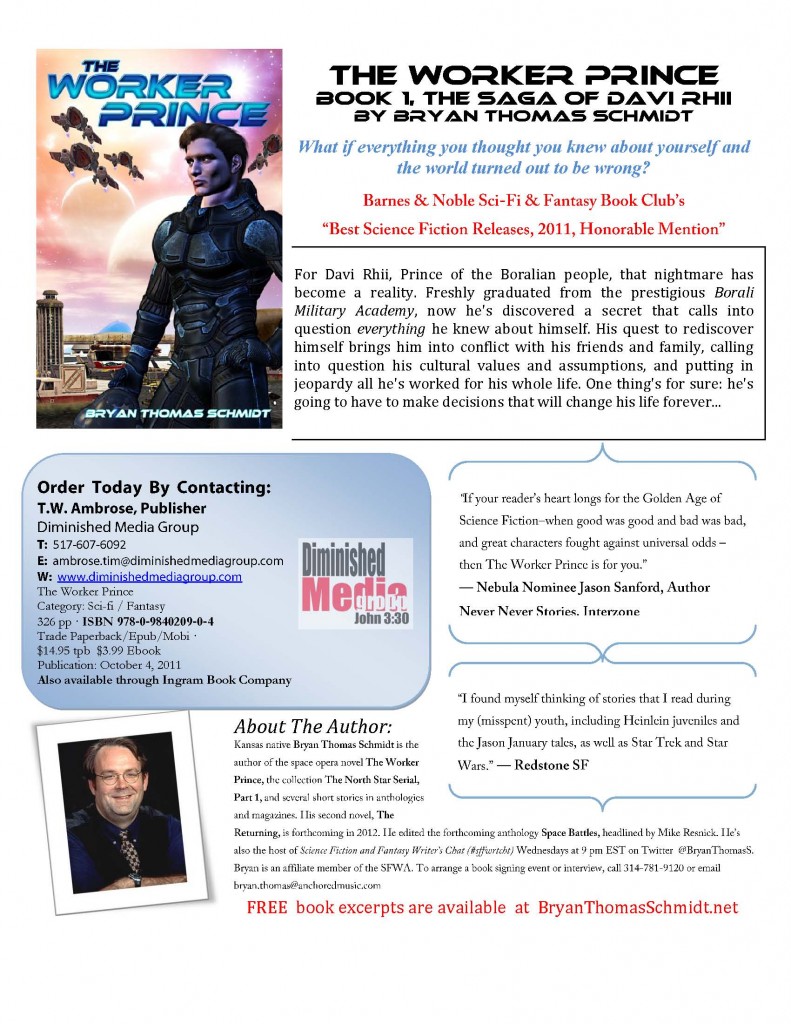


Adonna has some final thoughts:
“Your sell sheet is an actual marketing piece. It’s not just a piece of paper that you should throw together haphazardly. After you’re gone, a store employee may see it on the counter three hours later, check out your book info, read it, and then ask the manager to order in a few. This is marketing material will be used over and over again to sell your book to the book buyers. Take your time pulling your sheet together. Make sure it looks really nice. No typos! Color printed (if color adds to your layout). Attention to detail matters here and it just may sell you quite a few books.”
Ok, once you have a Sell Sheet, what do you do with it? Well, that’s what we’ll talk about Monday in Part 2: How To Get The Most Out Of Your Book Sell Sheets. So meantime, get to work on those Sell Sheets. OMG Blogging guy just gave me homework! Why yes, yes, I did.
For what it’s worth…
Additional Resources:
Here’s what Absolute Write says about Sell Sheets: http://absolutewrite.com/novels/sell_sheets.htm. Independent Book Publisher’s Association offers another resource: http://www.ibpa-online.org/publishers/flyer.aspx. Check http://www.fedex.com/us/office/templates/sellsheets.html for templates.
Exclusive Offer:
Adonna has agreed to a special offer exclusively for the visitors here.
PR Quick Check $35 – Adonna will check your current sell sheet offering general guidelines as well as give you tips for how to revise and improve it yourself to increase it’s marketing value for bookstores.
PR Sell Sheet Review – If your sheet needs more than just a few tips, she can fix it up for you for a range from $50 – $150 depending on how much work is needed. You will be given a quote before any work is completed.
Custom Book Sell Sheet – Created for your book from scratch for $200 (which is $100 off of the normal fee for this type of detailed service). Contact her at [email protected] to get started. From DIY help to full service PR, there’s something for everyone in there. You must mention this site in your email to her to get these discounts! Enjoy!



Adonna Pruette is a freelance professional publicist that works with fiction authors and publishers to create digital PR as well as traditional media outreach. Her clients range from well known writers like urban fantasy author Faith Hunter (www.faithhunter.net) to debut authors such as Lillian Archer (Twitter: @LilliansBooks). Her online home at TheAuthorPro.com (http://www.TheAuthorPro.com) is her current WIP. You can contact her at adonna AT theauthorpro.com or connect with her on Twitter @PassionMuse.
Contact details:
Website: http://www.theauthorpro.com
Facebook: http://www.facebook.com/authorpro
Twitter: @PassionMuse https://twitter.com/#!/passionmuse
Google +: http://bit.ly/Ar7hzi
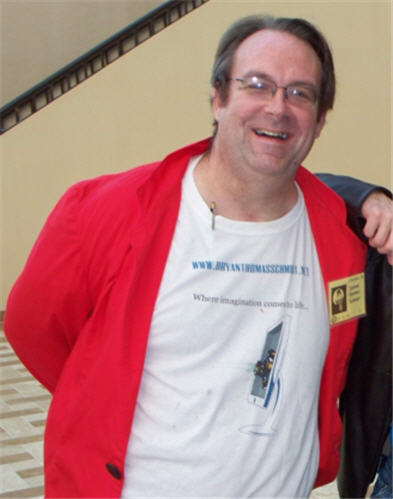


4 5-star & 11 4-star reviews THE WORKER PRINCE $3.99 Kindlehttp://amzn.to/pnxaNm or Nook http://bit.ly/ni9OFh $14.99 tpb http://bit.ly/qIJCkS.
For further help, please see https://bryanthomasschmidt.net/write-tip-how-to-get-the-most-out-of-your-book-sell-sheets/How To Get The Most Out of Your Sell Sheets.

